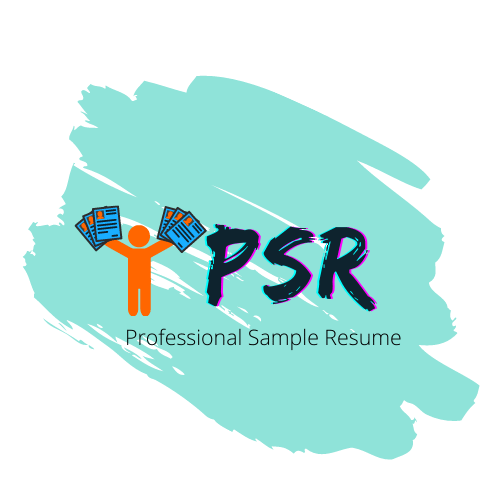Reading Lists
25 Scala Developer Interview Questions with Answers for Beginners
If you’re preparing for a Scala developer interview, it’s crucial to be familiar with fundamental concepts, syntax, and typical use cases. Here are 25 questions and answers to help you get started.
1. What is Scala?
Answer: Scala is a hybrid functional programming and object-oriented programming language. It is designed to be concise, elegant, and type-safe, making it a powerful tool for scalable software solutions.
2. What are the main features of Scala?
Answer: Some main features of Scala include:
- Statically typed: Ensures type safety.
- Object-oriented: Every value is an object.
- Functional: Supports functional programming paradigms.
- Concise: Less boilerplate code compared to Java.
- Interoperable: Can seamlessly use Java libraries.
3. How do you define a variable in Scala?
Answer: Variables in Scala can be defined using val for immutable variables and var for mutable variables.
scalaCopy codeval x: Int = 10 // Immutable
var y: Int = 20 // Mutable
4. What is a singleton object in Scala?
Answer: A singleton object is an object that is defined using the object keyword. It is similar to a class with a single instance and is often used for utility functions or as an entry point for a Scala application.
5. What is a case class in Scala?
Answer: A case class is a special type of class that comes with built-in methods for comparison, pattern matching, and immutability.
scalaCopy codecase class Person(name: String, age: Int)
6. Explain the difference between val and var in Scala.
Answer: val defines an immutable variable, meaning its value cannot be changed once assigned. var defines a mutable variable, allowing its value to be changed after initialization.
7. What is a higher-order function?
Answer: A higher-order function is a function that takes other functions as parameters or returns a function as a result.
8. What are implicit parameters in Scala?
Answer: Implicit parameters are function parameters that are automatically passed by the compiler if no explicit values are provided. They are defined using the implicit keyword.
9. How do you create an array in Scala?
Answer:
scalaCopy codeval arr: Array[Int] = Array(1, 2, 3, 4, 5)
10. What is a trait in Scala?
Answer: A trait is a collection of abstract and concrete methods that can be mixed into classes. Traits are similar to interfaces in Java but can contain method implementations.
You may also read: Scala Developer Resume Templates [0-8 Years Experience]
11. What is the use of apply method in Scala?
Answer: The apply method is a special method in Scala that allows objects to be used as functions. It is often used to create instances of classes without the new keyword.
12. Explain the concept of pattern matching in Scala.
Answer: Pattern matching is a mechanism for checking a value against a pattern. It is a more powerful version of the switch statement in other languages.
scalaCopy codex match {
case 1 => "one"
case 2 => "two"
case _ => "many"
}
13. What is the difference between map and flatMap in Scala?
Answer: map applies a function to each element in a collection, returning a collection of results. flatMap does the same but flattens nested collections into a single collection.
scalaCopy codeval numbers = List(1, 2, 3)
val mapped = numbers.map(_ * 2) // List(2, 4, 6)
val flatMapped = numbers.flatMap(x => List(x, x * 2)) // List(1, 2, 2, 4, 3, 6)
14. What is the purpose of the Option type in Scala?
Answer: Option is used to represent optional values, helping to avoid null references. It can be Some(value) or None.
15. How do you handle exceptions in Scala?
Answer: Exceptions are handled using try-catch blocks, similar to Java.
scalaCopy codetry {
// code that might throw an exception
} catch {
case e: Exception => println(e.getMessage)
}
16. What is the difference between sealed and abstract in Scala?
Answer: A sealed class can only be extended in the same file, which helps in exhaustive pattern matching. An abstract class can be extended in any file and can contain unimplemented methods.
17. How do you define a function in Scala?
Answer:
scalaCopy codedef add(x: Int, y: Int): Int = {
x + y
}
18. Explain the concept of lazy evaluation in Scala.
Answer: Lazy evaluation delays the computation of a value until it is needed, using the lazy keyword.
scalaCopy codelazy val lazyValue = computeValue()
19. What are implicit conversions in Scala?
Answer: Implicit conversions automatically convert one type to another when required, defined using implicit functions.
20. What is a companion object in Scala?
Answer: A companion object is an object with the same name as a class and is defined in the same file. It can access the private members of the class.
21. How do you concatenate two lists in Scala?
Answer:
scalaCopy codeval list1 = List(1, 2, 3)
val list2 = List(4, 5, 6)
val concatenatedList = list1 ++ list2
22. What is the purpose of the yield keyword in Scala?
Answer: The yield keyword is used in for-comprehensions to produce a collection of results from a loop.
23. How do you define a recursive function in Scala?
Answer:
scalaCopy codedef factorial(n: Int): Int = {
if (n == 0) 1 else n * factorial(n - 1)
}
24. What is the difference between List and Vector in Scala?
Answer: List is a linked list, providing fast access to the head but slow access to other elements. Vector is a more modern collection that offers fast random access and is more suitable for large collections.
25. How do you use the for comprehension in Scala?
Answer:
scalaCopy codeval numbers = List(1, 2, 3, 4, 5)
val doubled = for (n <- numbers) yield n * 2
Create Your Resume
We’re revolutionizing the resume industry with top-quality, custom-tailored resumes at a massive scale while maintaining exceptional quality.
25 Intermediate Scala Developer Interview Questions and Answers
Scala’s rich feature set and powerful abstractions make it popular for many modern applications. If you’re preparing for an intermediate-level Scala developer interview, it’s important to delve deeper into the language’s capabilities and best practices. Here are 25 questions and answers to help you prepare.
1. What is the difference between List and Seq in Scala?
Answer: List is a specific implementation of Seq that is a linked list, offering fast head operations but slower access to other elements. Seq is a general trait for sequential collections and can be implemented by various collections like List, Vector, etc.
2. Explain the concept of currying in Scala.
Answer: Currying transforms a function with multiple arguments into a series of functions, each taking one argument.
scalaCopy codedef add(x: Int)(y: Int): Int = x + y
You can call add(2)(3) to get the result 5.
3. What are type classes in Scala?
Answer: Type classes provide a way to achieve ad-hoc polymorphism. They allow you to define behavior for various types without modifying the types themselves, using implicits.
scalaCopy codetrait Show[A] {
def show(a: A): String
}
4. How do you achieve dependency injection in Scala?
Answer: Dependency injection can be achieved using constructor injection, the cake pattern, or libraries like MacWire and Guice.
scalaCopy codeclass Service(dep: Dependency)
5. What is the difference between Future and Task in Scala?
Answer: Future represents a computation that may or may not have completed yet. Task (from libraries like Monix or Cats Effect) is a more powerful abstraction that provides more control over asynchronous computations and side effects.
6. Explain variance in Scala (covariance, contravariance, invariance).
Answer: Variance describes how subtyping between more complex types relates to subtyping between their components.
- Covariance (
+T):Container[+T]means ifBis a subtype ofA, thenContainer[B]is a subtype ofContainer[A]. - Contravariance (
-T):Container[-T]means ifAis a subtype ofB, thenContainer[B]is a subtype ofContainer[A]. - Invariance:
Container[T]means no subtyping relationship.
7. What is an implicit class in Scala?
Answer: An implicit class is a way to add methods to an existing type without modifying it, often used for extending existing libraries.
scalaCopy codeimplicit class RichInt(val x: Int) extends AnyVal {
def square: Int = x * x
}
8. How do you define and use a for comprehension with multiple generators?
Answer:
scalaCopy codeval result = for {
x <- List(1, 2, 3)
y <- List("a", "b", "c")
} yield (x, y)
This will produce List((1,"a"), (1,"b"), (1,"c"), (2,"a"), (2,"b"), (2,"c"), (3,"a"), (3,"b"), (3,"c")).
9. What is tail recursion and why is it important?
Answer: Tail recursion is a form of recursion where the recursive call is the last operation in the function. Scala optimizes tail-recursive functions to prevent stack overflow errors.
scalaCopy code@tailrec
def factorial(n: Int, acc: Int = 1): Int = {
if (n <= 1) acc else factorial(n - 1, n * acc)
}
10. Explain the purpose of Monads in Scala.
Answer: Monads encapsulate computations in a context, allowing for chaining operations while managing side effects. Examples include Option, Future, and Either.
scalaCopy codeval result = for {
a <- Option(1)
b <- Option(2)
} yield a + b
11. How does the Either type work in Scala?
Answer: Either represents a value of one of two possible types (Left or Right). By convention, Right is used for success and Left for failure.
scalaCopy codeval result: Either[String, Int] = Right(42)
12. What are the main differences between Option and Try?
Answer: Option represents an optional value (presence or absence), while Try represents a computation that may fail, encapsulating success (Success) or failure (Failure).
13. Explain the concept of implicit parameters with an example.
Answer: Implicit parameters are passed automatically if they are in scope. They are useful for dependency injection and type classes.
scalaCopy codedef greet(name: String)(implicit greeting: String): String = s"$greeting, $name"
implicit val hello: String = "Hello"
greet("Alice") // "Hello, Alice"
14. How do you define and use an abstract type member in a trait?
Answer: Abstract type members allow you to define a type without specifying it, letting subtypes or clients specify it.
scalaCopy codetrait Container {
type A
def value: A
}
class StringContainer extends Container {
type A = String
val value = "Hello"
}
15. What are the benefits of using immutability in Scala?
Answer: Immutability provides thread safety, easier reasoning about code, and avoids side effects, leading to more predictable and maintainable code.
16. How do you perform parallel collections processing in Scala?
Answer: Scala provides parallel collections through the .par method, which can parallelize operations on collections.
scalaCopy codeval result = List(1, 2, 3, 4).par.map(_ * 2)
17. What is a context bound in Scala?
Answer: A context bound specifies that a type must have an implicit value available for a type class.
scalaCopy codedef print[A: Show](a: A): Unit = implicitly[Show[A]].show(a)
18. Explain the usage and benefits of the ZIO library.
Answer: ZIO is a library for asynchronous and concurrent programming, providing a powerful effect system that manages side effects, resource handling, and error handling in a type-safe way.
19. What is the difference between Stream and LazyList in Scala?
Answer: Stream is a deprecated lazy collection that only computes elements when needed. LazyList is its replacement, providing the same lazy semantics but with improved performance and safety.
20. How do you define and use a custom extractor in pattern matching?
Answer:
scalaCopy codeobject Even {
def unapply(x: Int): Option[Int] = if (x % 2 == 0) Some(x) else None
}
42 match {
case Even(n) => println(s"$n is even")
case _ => println("Not even")
}
21. Explain the concept of PartialFunction in Scala.
Answer: A PartialFunction is a function that is only defined for certain inputs. It is often used in pattern matching.
scalaCopy codeval partial: PartialFunction[Int, String] = {
case 1 => "one"
case 2 => "two"
}
22. What is the purpose of Applicative in functional programming?
Answer: Applicative is a type class that allows applying functions in a context to values in a context, enabling more powerful composition than Functor.
23. How do you use the @tailrec annotation in Scala?
Answer: The @tailrec annotation ensures that a recursive method is tail-recursive, which the compiler can optimize.
scalaCopy code@tailrec
def gcd(a: Int, b: Int): Int = if (b == 0) a else gcd(b, a % b)
24. What is the Monoid type class and how is it used?
Answer: A Monoid is an algebraic structure with an associative binary operation and an identity element, used for combining values.
scalaCopy codetrait Monoid[A] {
def combine(x: A, y: A): A
def empty: A
}
25. Explain how to use Scala’s Future for asynchronous programming.
Answer: Future allows you to perform computations asynchronously, handling success and failure using callbacks or combinators like map, flatMap, and recover.
scalaCopy codeimport scala.concurrent.Future
import scala.concurrent.ExecutionContext.Implicits.global
val future = Future {
// Some long-running computation
}
future.map(result => println(s"Result: $result"))25 Advanced Scala Developer Interview Questions with Answers
A strong grasp of complex language features, functional programming principles, and best practices is essential for advanced Scala developers. Here are 25 advanced-level Scala interview questions and answers to help you prepare.
1. What are type lambdas and how are they used in Scala?
Answer: Type lambdas are a way to define anonymous type functions. They can be useful for higher-kinded types where you need to partially apply type constructors.
scalaCopy codetype EitherStringOr[A] = ({ type L[B] = Either[String, B] })#L[A]
2. Explain the concept of the type-level programming in Scala.
Answer: Type-level programming involves using types to enforce constraints and logic at compile-time, leveraging features like path-dependent types, type classes, and implicit resolution to ensure correctness.
3. How do you use and create context bounds in Scala?
Answer: Context bounds specify that a type must have an implicit value available for a given type class.
scalaCopy codedef sort[T: Ordering](list: List[T]): List[T] = list.sorted
This requires an implicit Ordering[T] to be in scope.
4. What is the difference between covariant and contravariant functors?
Answer: Covariant functors preserve the direction of morphisms (F[A] to F[B] for A to B). Contravariant functors reverse it (F[B] to F[A] for A to B).
scalaCopy codetrait Functor[F[_]] {
def map[A, B](fa: F[A])(f: A => B): F[B]
}
trait ContravariantFunctor[F[_]] {
def contramap[A, B](fa: F[A])(f: B => A): F[B]
}
5. How do you achieve type safety with shapeless library?
Answer: Shapeless provides tools for generic programming, such as HList and Coproduct, which enable type-safe manipulation of heterogeneous data.
scalaCopy codeimport shapeless._
val hlist = 1 :: "hello" :: true :: HNil
6. Explain how to use cats library for functional programming in Scala.
Answer: cats provides type classes and instances for functional programming abstractions like Functor, Monad, and Applicative.
scalaCopy codeimport cats._
import cats.implicits._
val optionMonad = Monad[Option]
val result = optionMonad.flatMap(Option(1))(x => Option(x + 2))
7. What is the purpose of Free monad in Scala?
Answer: The Free monad separates the description of a computation from its execution, enabling the construction of interpreters to handle side effects.
scalaCopy codeimport cats.free.Free
sealed trait Console[A]
case class Println(s: String) extends Console[Unit]
type ConsoleFree[A] = Free[Console, A]
8. How do you use the Tagless Final pattern in Scala?
Answer: The Tagless Final pattern abstracts over effectful computations using higher-kinded types and type classes, improving modularity and testability.
scalaCopy codetrait Console[F[_]] {
def putStrLn(line: String): F[Unit]
}
def program[F[_]: Console]: F[Unit] = {
implicitly[Console[F]].putStrLn("Hello, Tagless Final!")
}
9. Explain the use of Eff monad in Scala.
Answer: Eff is a library for defining and composing effectful computations using type-safe algebraic effects.
scalaCopy codeimport org.atnos.eff._
import org.atnos.eff.syntax.all._
type Stack = Fx.fx2[Option, Either[String, *]]
val action: Eff[Stack, Int] = for {
a <- OptionEffect.some
b <- EitherEffect.right
} yield a + b
10. What are type classes in Scala and how do you create them?
Answer: Type classes define behavior for types without modifying them. They are implemented using traits and implicits.
scalaCopy codetrait Show[A] {
def show(a: A): String
}
implicit val intShow: Show[Int] = (a: Int) => a.toString
def show[A: Show](a: A): String = implicitly[Show[A]].show(a)
11. How do you handle dependent types in Scala?
Answer: Dependent types allow types to depend on values, providing more precise type information.
scalaCopy codeclass Dependent {
type T
def value: T
}
val d = new Dependent { type T = String; def value = "Dependent" }
12. What is Kind Projector and how is it used in Scala?
Answer: Kind Projector is a compiler plugin that simplifies working with higher-kinded types by providing a concise syntax for type lambdas.
scalaCopy codetrait Functor[F[_]] {
def map[A, B](fa: F[A])(f: A => B): F[B]
}
type EitherStringOr[A] = Either[String, A]
val functor = new Functor[EitherStringOr] {
def map[A, B](fa: EitherStringOr[A])(f: A => B): EitherStringOr[B] = fa.map(f)
}
13. How do you implement tagless final algebras in Scala?
Answer: Tagless final algebras are implemented using traits with higher-kinded types to abstract over effectful computations.
scalaCopy codetrait Console[F[_]] {
def putStrLn(line: String): F[Unit]
}
def program[F[_]: Console]: F[Unit] = {
implicitly[Console[F]].putStrLn("Hello, Tagless Final!")
}
14. What is the purpose of ZIO in functional programming?
Answer: ZIO is a library for asynchronous and concurrent programming that provides a powerful effect system to manage side effects, resource handling, and error handling in a type-safe way.
scalaCopy codeimport zio._
val program: ZIO[Any, Nothing, Unit] = ZIO.effectTotal(println("Hello, ZIO"))
15. How do you use the Doobie library for database access in Scala?
Answer: Doobie is a library for accessing relational databases, providing type-safe SQL construction and execution.
scalaCopy codeimport doobie._
import doobie.implicits._
import cats.effect.IO
val xa = Transactor.fromDriverManager[IO](
"org.postgresql.Driver", "jdbc:postgresql:world", "postgres", ""
)
val query = sql"select name from country".query[String].to[List]
val result = query.transact(xa).unsafeRunSync()
16. Explain the concept of cats.effect.IO and its usage.
Answer: IO in cats.effect represents a computation that produces a result and can have side effects, providing referential transparency and safe resource handling.
scalaCopy codeimport cats.effect.IO
val io = IO { println("Hello, IO!") }
io.unsafeRunSync()
17. How do you use the Monix library for reactive programming in Scala?
Answer: Monix provides abstractions for asynchronous and reactive programming, including Task and Observable.
scalaCopy codeimport monix.eval.Task
import monix.execution.Scheduler.Implicits.global
val task = Task { println("Hello, Monix!") }
task.runAsyncAndForget
18. What are the benefits and use cases of using Shapeless in Scala?
Answer: Shapeless enables generic programming, providing tools for working with heterogeneous data, automatic type class derivation, and more, improving code reuse and type safety.
scalaCopy codeimport shapeless._
case class User(name: String, age: Int)
val gen = Generic[User]
val user = gen.from("Alice" :: 30 :: HNil)
19. How do you leverage Scala’s macro system for metaprogramming?
Answer: Macros provide compile-time metaprogramming capabilities, allowing you to generate code, perform validations, and more.
scalaCopy codeimport scala.language.experimental.macros
import scala.reflect.macros.blackbox
def debug(param: Any): Unit = macro debugImpl
def debugImpl(c: blackbox.Context)(param: c.Expr[Any]): c.Expr[Unit] = {
import c.universe._
reify { println(param.splice) }
}
20. How do you use the Refined library to add type constraints in Scala?
Answer: Refined adds type-level constraints to Scala types, ensuring more precise types and avoiding runtime errors.
scalaCopy codeimport eu.timepit.refined._
import eu.timepit.refined.api.Refined
import eu.timepit.refined.numeric._
type PositiveInt = Int Refined Positive
val positive: Either[String, PositiveInt] = refineV[Positive](10)
21. Explain the role of scalaz in functional programming in Scala.
Answer: Scalaz provides foundational functional programming abstractions, such as monads, applicatives, and lenses, enabling more expressive and composable code.
scalaCopy codeimport scalaz._
import Scalaz._
val list = List(1, 2, 3)
val doubled = list.map(_ * 2)
22. How do you define and use polymorphic methods in Scala?
Answer: Polymorphic methods operate on different types without specifying them, using type parameters.
scalaCopy codedef identity[A](a: A): A = a
identity(42) // 42
identity("Scala") // "Scala"
23. What is the role of Eff monad in effectful programming in Scala?
Answer: The Eff monad allows for composable and type-safe effectful programming, handling multiple effects in a single computation.
scalaCopy codeimport org.atnos.eff._
import org.atnos.eff.all._
import org.atnos.eff.syntax.all._
type Stack = Fx.fx2[Option, Either[String, *]]
val action: Eff[Stack, Int] = for {
a <- optionEffect.some(1)
b <- eitherEffect.right(2)
} yield a + b
24. How do you handle higher-kinded types in Scala?
Answer: Higher-kinded types allow you to abstract over type constructors, enabling more general and reusable code.
scalaCopy codetrait Container[F[_]] {
def map[A, B](fa: F[A])(f: A => B): F[B]
}
25. What are the benefits of using the Typelevel ecosystem in Scala?
Answer: The Typelevel ecosystem provides libraries and tools for principled functional programming, such as cats, fs2, circe, and more, promoting type safety, composability, and purity.
scalaCopy codeimport cats._
import cats.implicits._
val option = Option(1)
val doubled = option.map(_ * 2)
Conclusion
Mastering advanced Scala concepts and libraries is crucial for developing robust, type-safe, and maintainable applications. These 25 advanced-level questions and answers will help you deepen your understanding and prepare for high-level Scala interviews. Good luck!


